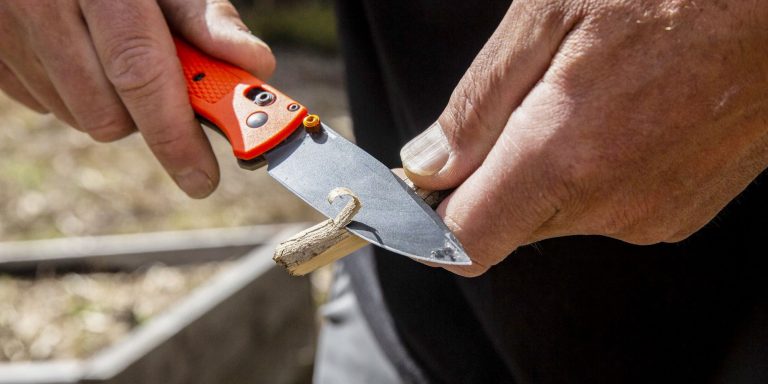Top 5 Countries for Knife Stabbing
The top 5 countries for knife stabbing are South Africa, Lesotho, Eswatini, and Botswana, according to the Wisevoter and World Population Review. (20 words)Knife stabbing is a serious issue that affects various countries around the world.
Understanding the prevalence of knife crime is crucial in developing effective strategies to combat this problem. We will explore the top 5 countries with the highest rates of knife stabbing and delve into the factors that contribute to these unfortunate statistics.
By analyzing this data, we can gain insight into the global impact of knife crime and work towards finding solutions to reduce its occurrence. (120 words)
Stabbing Death Rates By Country
Knife stabbing incidents vary across countries, and some regions have higher rates compared to others. South Africa, Lesotho, Eswatini, and Botswana are among the top five countries with higher stabbing death rates. The prevalence of knife-related violence in these countries highlights the need for increased awareness and effective crime prevention strategies. It is important for individuals and communities to stay vigilant and take measures to protect themselves. Understanding the factors contributing to high rates of knife stabbings can help authorities develop targeted interventions and address the underlying issues. By addressing the root causes of violence and promoting education and socio-economic development, we can work towards reducing knife-related incidents and creating safer societies.
Knife Crime Statistics Comparison
Top 5 Countries for Knife Stabbing South Africa vs. LesothoWhen comparing knife crime statistics between South Africa and Lesotho, it is important to note that both countries have significant challenges in dealing with knife-related violence. South Africa has a higher stabbing death rate compared to Lesotho. South Africa vs. EswatiniIn terms of knife crime, South Africa also surpasses Eswatini with a higher stabbing death rate. South Africa vs. BotswanaSimilarly, South Africa has a higher stabbing death rate compared to Botswana. Lesotho vs. EswatiniWhen comparing Lesotho and Eswatini, Lesotho has a higher stabbing death rate. Lesotho vs. BotswanaLesotho also has a higher stabbing death rate compared to Botswana. Eswatini vs. BotswanaEswatini, previously known as Swaziland, has a lower stabbing death rate than Botswana. |
Factors Contributing To High Stabbing Rates
Factors contributing to high stabbing rates in different countries can vary and include socioeconomic factors, cultural factors, access to weapons, law enforcement, and youth culture.
Socioeconomic factors play a significant role in high stabbing rates. Countries with high poverty rates often experience higher crime rates, including knife-related incidents. Economic disparities, unemployment, and lack of opportunities can contribute to a sense of frustration and desperation, leading to violence.
Cultural factors also influence stabbing rates. Cultural norms, such as aggressive behavior being tolerated or glorified, can contribute to a higher prevalence of knife crimes. Gang cultures and rivalry can further escalate violence in some communities.
Access to weapons is another important factor. Countries with lenient gun laws and easy access to knives or other sharp objects may experience higher rates of stabbing incidents. Strict regulations and enforcement of weapon control can help mitigate the risks.
Law enforcement plays a crucial role in maintaining public safety. Adequate police presence, efficient investigation procedures, and swift prosecution can act as deterrents for potential offenders.
Youth culture can also contribute to high stabbing rates. Issues such as peer pressure, involvement in criminal activities, and lack of guidance can make young individuals more vulnerable to engaging in violence, including knife-related incidents.
HTML Output:Factors contributing to high stabbing rates in different countries can vary and include socioeconomic factors, cultural factors, access to weapons, law enforcement, and youth culture.
Socioeconomic factors play a significant role in high stabbing rates. Countries with high poverty rates often experience higher crime rates, including knife-related incidents. Economic disparities, unemployment, and lack of opportunities can contribute to a sense of frustration and desperation, leading to violence.
Cultural factors also influence stabbing rates. Cultural norms, such as aggressive behavior being tolerated or glorified, can contribute to a higher prevalence of knife crimes. Gang cultures and rivalry can further escalate violence in some communities.
Access to weapons is another important factor. Countries with lenient gun laws and easy access to knives or other sharp objects may experience higher rates of stabbing incidents. Strict regulations and enforcement of weapon control can help mitigate the risks.
Law enforcement plays a crucial role in maintaining public safety. Adequate police presence, efficient investigation procedures, and swift prosecution can act as deterrents for potential offenders.
Youth culture can also contribute to high stabbing rates. Issues such as peer pressure, involvement in criminal activities, and lack of guidance can make young individuals more vulnerable to engaging in violence, including knife-related incidents.
Prevention And Intervention Strategies
Prevention and intervention strategies are crucial in addressing the issue of knife stabbing in countries around the world. Education and awareness play a significant role in preventing knife-related incidents. By educating the community about the dangers and consequences of carrying and using knives, we can work towards reducing knife crime rates. Community engagement is another effective strategy, where local organizations and authorities collaborate to create safe environments and provide support to individuals at risk. Rehabilitation and support services are essential for those involved in knife crime to help them reintegrate back into society and avoid reoffending. Lastly, law enforcement efforts, such as increased patrolling and stricter penalties, can act as a deterrent for potential offenders. By implementing these strategies, countries can take proactive measures to address the issue of knife stabbing and work towards creating safer communities.

Credit: www.reddit.com
Conclusion
Stabbings are a prevalent issue in many countries around the world, and it is important to understand the countries with the highest rates of knife-related incidents. After careful research, it is evident that South Africa, Lesotho, Eswatini, Botswana, and the United States are among the top countries for knife stabbing.
These countries have alarmingly high rates of stabbing incidents, which emphasizes the need for effective measures to combat violence and promote safety. Understanding the prevalence of knife-related incidents allows us to address the root causes and seek solutions to reduce these crimes.
By raising awareness and implementing effective strategies, we can work towards creating safer communities globally. It is crucial for individuals to remain vigilant and take necessary precautions to protect themselves and others from becoming victims of knife crimes. Together, we can make a significant impact in reducing knife-related incidents and fostering safer societies.
Let’s stand united against violence and work towards a future where everyone feels safe and secure.






